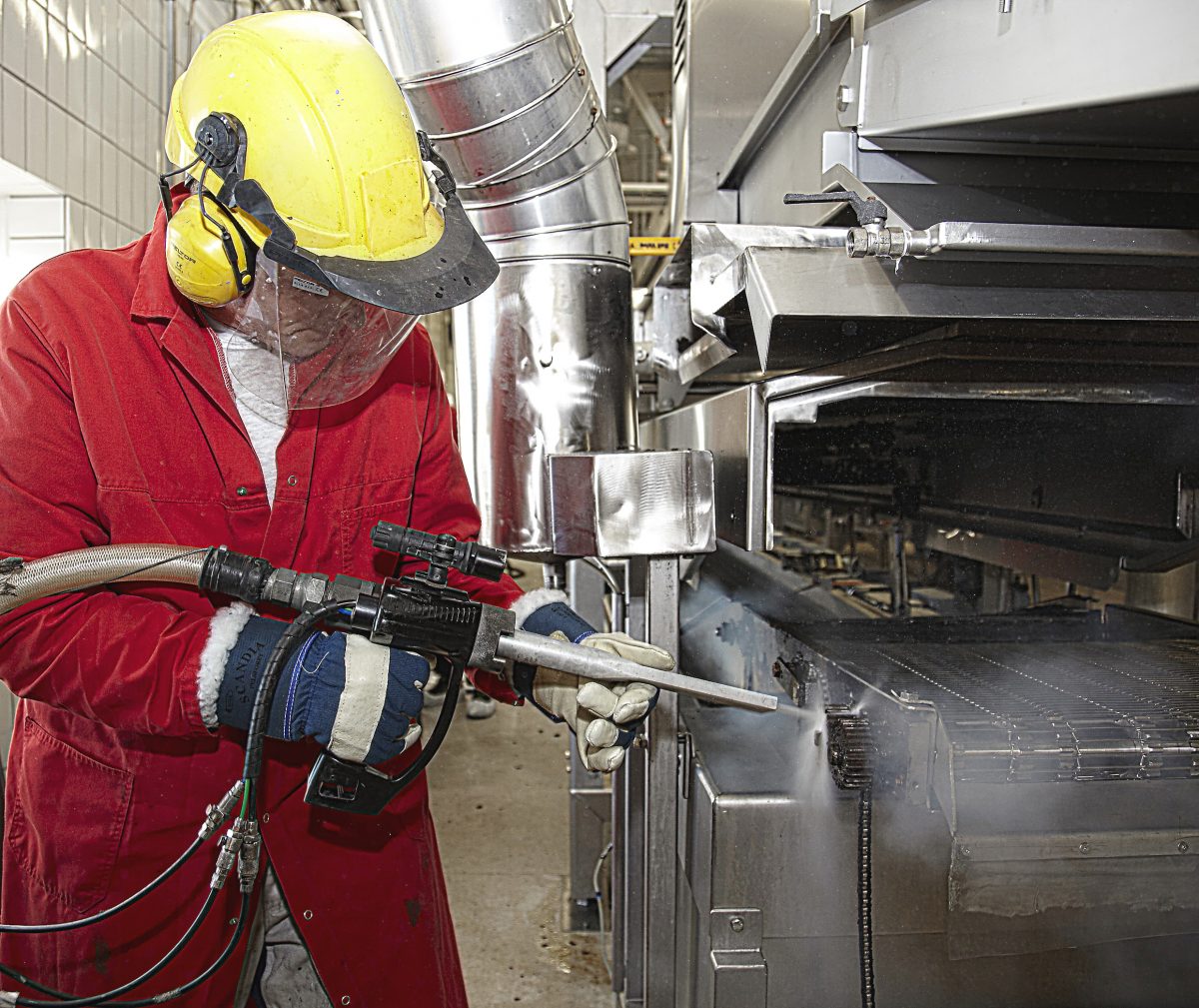Disinfecting with Dry Ice San Francisco
Dry ice has become quite popular as a disinfecting agent, especially in the food industry and with mold removal. Since it uses CO2 as the primary agent to clean, it can easily disinfect simply by the destruction of microorganisms and other infectious vectors located on the surface being cleaned. CO2 prevents any microbial growth, and has been found to be safer than other disinfecting agents since it doesn’t leave behind a chemical residue or excess material for clean-up after use. Dry ice blasting takes the dry ice and releases it onto the surface in tiny dry ice pellets which then return to the atmosphere by sublimation upon contact. This then turns the ice pellets into a gas leaving the surface dry after cleaning with no use of harsh or possibly harmful chemicals.
Benefits of Dry Ice
Since dry ice doesn’t use water in the cleaning process, it is an ideal choice for any disinfecting job, especially when the equipment is sensitive to moisture. CO2 has been found to destroy and slow the growth of bacteria and fungus such as salmonella and listeria, due to the low temperature exposure that will likely destroy the bacteria upon contact. This makes it an ideal method of disinfecting surfaces because instead of using harsh chemicals to clean, especially around food or cooking surfaces, it can use natural methods to rid areas of harmful bacteria.
This chemical-free cleaning system is also non-abrasive and can be used on almost any surface imaginable. It replaces almost any traditional cleaning method involving scrubbing and/or harsh chemicals. Dry ice can be used to clean surfaces like rubber molds, plastic coverings, wooden surfaces, and metal machinery. It is extremely versatile in its application and still equally effective in disinfecting all types of surfaces. It can even be used to clean machinery at the operating temperatures, which then allows for the elimination of shutting down or dismantling equipment for cleaning.
There is generally no need to dismantle equipment being cleaned via dry ice blasting due to the fact that the spray of small dry ice pellets are able to reach into tight and confined spaces. The only time you may need to dismantle anything is if you are cleaning behind an area that has a cover. In those cases, you will simply need to open or remove the cover to clean inside.
Although it is a highly effective cleaning method, there are a few things that users should be aware of before embarking on their dry ice disinfecting quests. The pressure and quantity of CO2 present are essential in having a successful destruction of bacterial growth. Dry ice will almost always disinfect the area cleaned when used properly, but when used in certain environments (i.e. dairy production) it has been shown to lead to small amounts to recontamination due to the possible spread of bacteria. Dry ice cleaning effectively cleans food processing and packaging equipment of grease, wax, proteins, seasonings, crumbs, glue and other build-up when used correctly with the manufacturers guidelines in mind.

